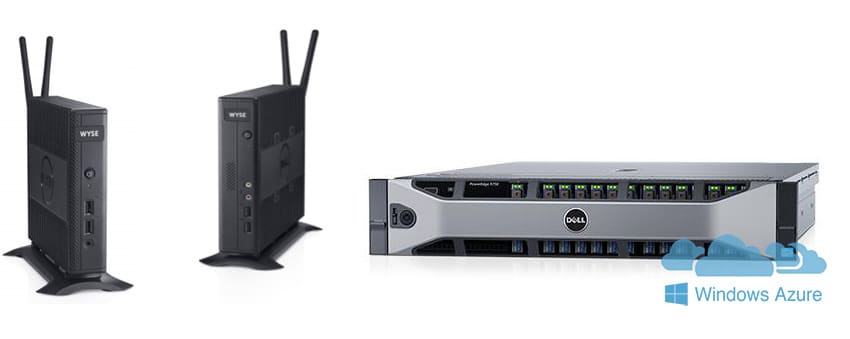At Microsoft Worldwide Partner Conference, Dell announced that its latest Wyse thin clients will have a new operating system based on Windows 10 IoT Enterprise, making Dell the first OEM to deliver thin clients running this OS. It also announced new updates to its vWorkspace desktop virtualization software; all aimed at making it easier to plan, deploy and run desktop virtualization. These new solutions are ideal for organizations looking to Microsoft Azure-based VDI. With these new solutions, Dell continues to create endpoints that are secure, high performing, and keep up workers’ productivity.

The Wyse thin clients are secure, flexible, and compatible with several desktop virtualization solutions and are widely used in highly-regulated industries such as retail, healthcare, government, finance and education. Since Dell acquired Wyse it has made several updates and advancements since first introducing them. These updates include a Dell Wyse appliance for Citrix environments and Precision Appliance for Wyse bringing workstation capabilities to thin client end users. Dell is adding the Wyse 7490-Z90Q10 and 5490-D90Q10 thin clients that will be available with Windows 10 IoT Enterprise.
New Wyse thin clients benefits and features:
- High Performance: The Wyse 7490-Z90Q10 and 5490-D90Q10 include quad-core AMD G-Series processors for fast boot, smooth performance, and full productivity across a broad range of use cases.
- Secure: Protection against modern security threats including advanced malware resistance, with features such as Trusted Platform Module (TPM), BitLocker Drive Encryption, Secure Boot, and Windows Defender.
- Flexible Management: Right-sized management for different use cases, from on-premises with “hands off” file server, Wyse Device Manager software, or Microsoft System Center Configuration Manager. Simple, scalable administration for just a few to tens of thousands of thin clients.
Earlier this year, Dell announced updates to its vWorkspace desktop virtualization software to increase performance and productivity in Microsoft business environments. The latest version, version 8.6, now supports Microsoft Hyper-V and Azure platforms, as well as Windows 10-based VMs. vWorkspace 8.6 can lower the cost of hosting Windows remote applications on Microsoft Azure through actions such as powering off unused sessions within a public cloud. With the new updates Dell aims to provide businesses of all sizes with cost-effective virtualization of Windows desktops and applications that can be managed without specialized staff.
Benefits and features of vWorkspace 8.6 include:
- Global localization: vWorkspace 8.6 can now be installed in a non-Roman language OS/Active Directory environment such as simplified Chinese, Japanese and Korean, with support for the Double Byte Character Set.
- Greater connectivity to Windows applications: vWorkspace provides an ecosystem of connectors for Windows, Linux and Chrome devices, delivering a more native experience than HTML5 access. These device connectors are enabled for Chinese, Japanese and Korean, making it easier for users in multinational organizations to securely access applications and content.
- Ease of use: It’s easier than ever to access and use vWorkspace 8.6. Users can sign-on with just an email address and can also easily drag and drop files from a physical Windows PC into a virtual desktop. For example, users can drag documents directly into the correct folder of a hosted CRM application, or insurance field agents can drag photos into a centralized, hosted database.
- Flexibility: Other enhancements include application layering for VDI, which simplifies application deployment and management, and reduces the number of Windows images that need to be maintained.
And Dell is also announcing update to its Unified Communications Command Suite (UCCS), the latest version being 8.1. UCCS now supports analytics reporting for Office 365 for Exchange Online and Cisco Unified Communications Manager to Dell’s cross-platform analytics and diagnostics solution. Now organizations will be able to gain insights on workforce activity, email usage and trends, and communication consumption. These insights can help companies user productivity, encourage adoption, protect sensitive information, increase ROI, and plan for future growth and migrations.
Availability and pricing
- Dell Wyse 7490-Z90Q10 and 5490-D90Q10 thin clients will be available July 29, 2015 with prices starting at $659.00 for the 7000 series and $599.00 for the 5000 series.
- Wyse vWorkspace 8.6 is expected to be available starting July 31, 2015 and will start at $97.50 per named user or per access device for Premier licensing, including first year maintenance and support.
- Unified Communications Command Suite 8.1 is available now.




 Amazon
Amazon